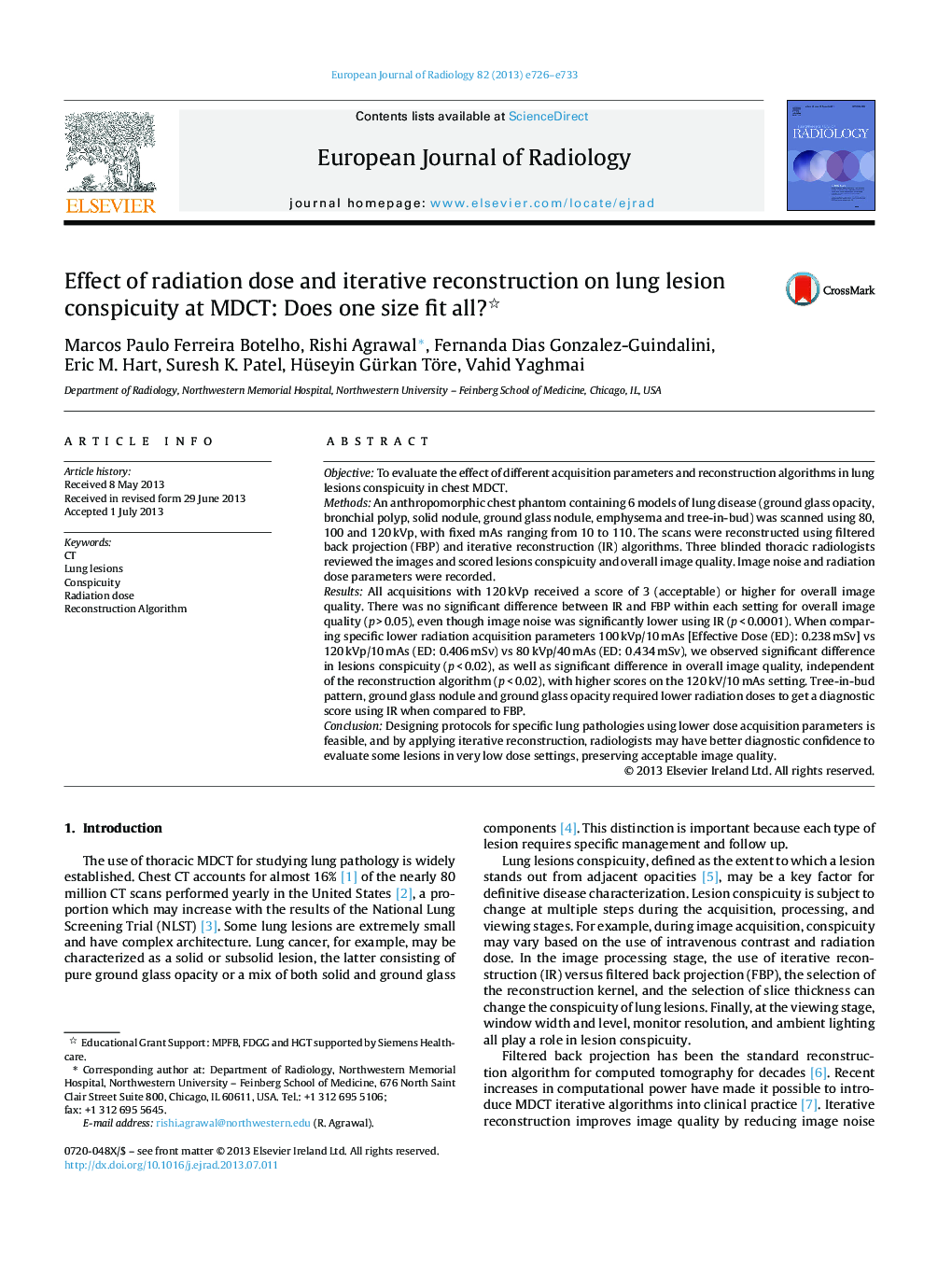| Article ID | Journal | Published Year | Pages | File Type |
|---|---|---|---|---|
| 4225669 | European Journal of Radiology | 2013 | 8 Pages |
ObjectiveTo evaluate the effect of different acquisition parameters and reconstruction algorithms in lung lesions conspicuity in chest MDCT.MethodsAn anthropomorphic chest phantom containing 6 models of lung disease (ground glass opacity, bronchial polyp, solid nodule, ground glass nodule, emphysema and tree-in-bud) was scanned using 80, 100 and 120 kVp, with fixed mAs ranging from 10 to 110. The scans were reconstructed using filtered back projection (FBP) and iterative reconstruction (IR) algorithms. Three blinded thoracic radiologists reviewed the images and scored lesions conspicuity and overall image quality. Image noise and radiation dose parameters were recorded.ResultsAll acquisitions with 120 kVp received a score of 3 (acceptable) or higher for overall image quality. There was no significant difference between IR and FBP within each setting for overall image quality (p > 0.05), even though image noise was significantly lower using IR (p < 0.0001). When comparing specific lower radiation acquisition parameters 100 kVp/10 mAs [Effective Dose (ED): 0.238 mSv] vs 120 kVp/10 mAs (ED: 0.406 mSv) vs 80 kVp/40 mAs (ED: 0.434 mSv), we observed significant difference in lesions conspicuity (p < 0.02), as well as significant difference in overall image quality, independent of the reconstruction algorithm (p < 0.02), with higher scores on the 120 kV/10 mAs setting. Tree-in-bud pattern, ground glass nodule and ground glass opacity required lower radiation doses to get a diagnostic score using IR when compared to FBP.ConclusionDesigning protocols for specific lung pathologies using lower dose acquisition parameters is feasible, and by applying iterative reconstruction, radiologists may have better diagnostic confidence to evaluate some lesions in very low dose settings, preserving acceptable image quality.
